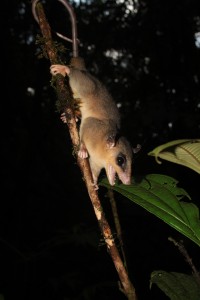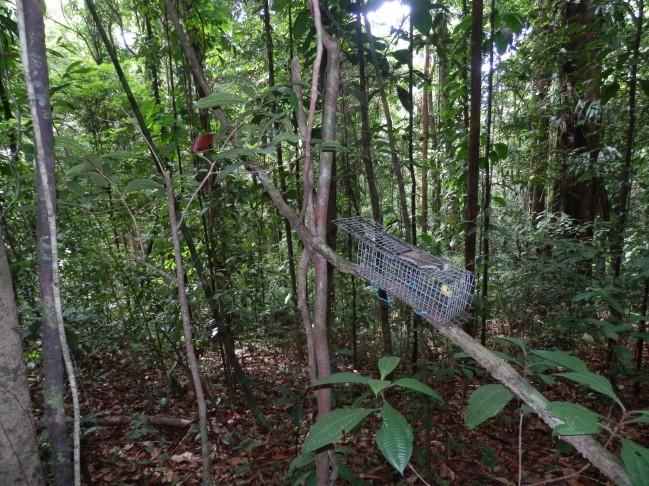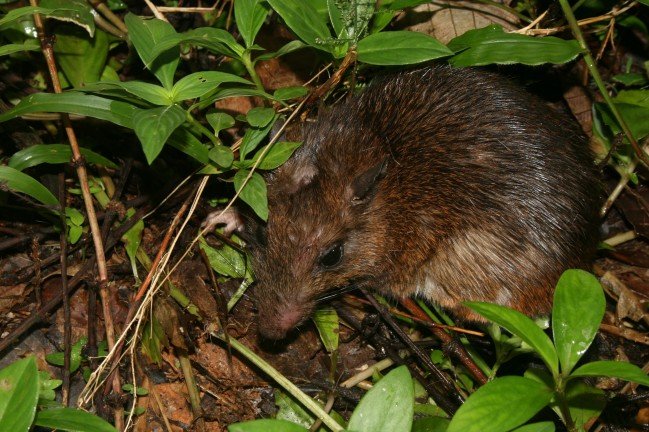Opossums and small rodents
On national scale
The study of opossums and small rodents in French Guiana remains very partial. The main knowledge gained to date concerns taxonomy. Very few ecological studies, including the importance of these communities in the humid tropical forest system, have been conducted. Like bats, they play a major role especially in seed dispersal and its corollary forest regeneration.
The Pasteur Institute in French Guiana has been interested in the role of rodents as a source of certain viruses for many years. Today, the Institute multiplies inventories anywhere in the department to better understand the communities and better understand the risks. It is very interested in the development of new research areas where the monitoring has been going on for a long time.
On local scale
RNR Trésor has been researching the diversity of rodents and opossums it houses since 2005. Two first inventories have been conducted in cooperation with François Catzéflis of the University of Montpellier. Both samplings made in 2005 and in 2010 along the botanical trail, showed a strong fluctuation in abundance. Compared to missions in other forest areas, this has also been observed, while in other sites such as Nouragues, the relative abundance is constant (Catzéflis, 2010). For now, it is not possible to make a representation of the seasonality of existing communities in the reserve.
Additional observations have subsequently been acquired through the installation of camera traps (SPECIES study, WWF-KWATA, 2009) and during surveys conducted by the guards in various areas of the reserve. Since 2010, they have specialized in the study of these animals and multiplied the capture sessions. Given the heaviness of the standard protocol (study methodology requires different trap cages whose volume is adapted to the size of the animals and the need to set of a lot of traps in the hope to catch only some animals), efforts have focused, until today, mainly on the high part of the reserve. It has the double advantage of transporting the study material there without too much difficulty and being close to the entrance building while serving as a base camp, since the high part of the reserve is easily accessible.
Presently known species and their patrimonial interest
Of the 87 species of terrestrial mammals that wander French Guiana (Catzéflis, 2011), 22 species are considered critical in the new inventory ZNIEFF, mainly because of their endemism in the Guiana Shield. Ten of them are opossums and rodents, which is nearly 50% of the mammal species should be awarded greater attention. Three of these species are reported in RNR Trésor.
In total, fourteen species are currently known to Trésor, of which 7 are opossums and 7 small rodents.
Can other species still be found in the Trésor reserve despite previous exploring efforts? Certainly! The data currently available about the Kaw Mountain show the presence of some particularly rare species in French Guiana and particularly poorly documented (Gracilinanus emiliae, Hyladelphys kalinowskii). Other more common forest species are missing from the inventory despite their known presence along these sites (Marmosa murina, Echimys chrysurus). The water opposum (Chironectes minimus), the only protected species of opossum in French Guiana, should be able to be found, but hasn’t been yet. Finally, in the savannah of the reserve, there is a high probability of finding subservient common species in open habitats (Oligoryzomys fulvescens, Zygodontomys brevicauda) just like on the Nancibo savannah, which is geographically very close.




